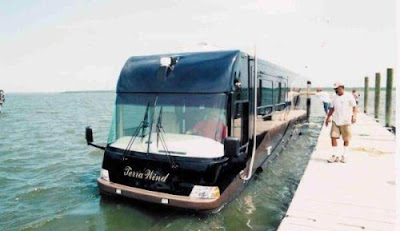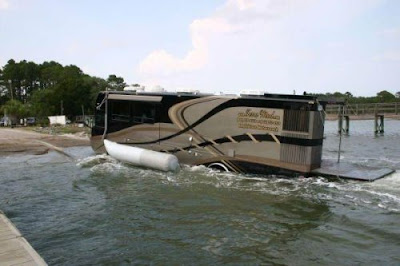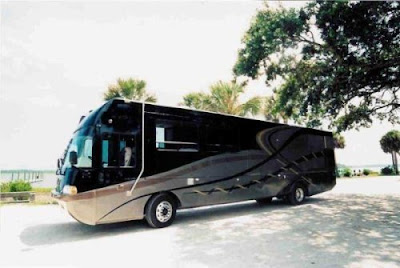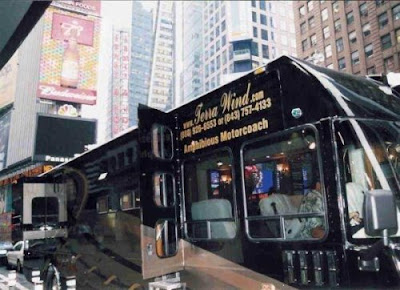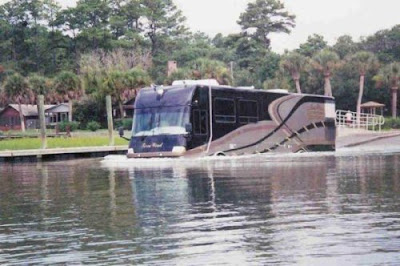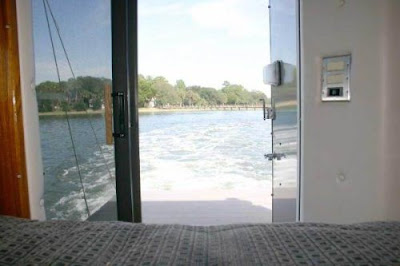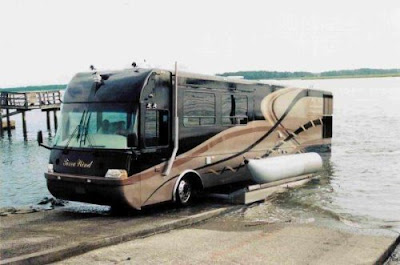Search This Blog
Sunday, November 29, 2009
luxury yacht charter and caribbean yacht charters
The best charter yachts in the world

Luxury yacht rentals
Fashion of luxury yachts is up to date worldwide. But not everyone can afford an expensive vessel. Solution, however, and it is very easy. Worldwide, and our country is offered "chartering or renting a yacht of your choice for a certain period of time.

Luxury yacht charter , luxury yacht rental , luxury yacht rentals
Companies offer huge catalogs, where you can select the desired vessel. And the last publication of Boats and Yachts

Caribbean yacht charter
Yacht and powerboat article appeared and the best charter yachts in the world. They are arranged in different characteristics.
luxury yacht rental

Luxury yacht rental
Any real estate advisor, will always tell you that the most important factors when buying a house are location, location, location. They have a point. Every other aspect is the variable of bricks and mortar with landscaped garden. Its location, on the other hand, is permanent. Probably so super yachts are the most luxurious.

Luxury yacht charter
You can have all the comforts of home and ask their cadets live and where you want the luxury of mega yacht. It is also quite handy. Two-thirds of the Earth's surface is covered with water, yacht owners access to a myriad of stunning locations denied to the majority of the population.

Luxury yacht
So how come most of the park still mega yacht spends the summer months, clustered together in one little corner of the Mediterranean Sea, then to move even small clutch of islands in the Caribbean? It is true that both are good spots better prepared to cope with the demanding needs of mega yacht fleet, but there is a whole world of possibilities there waiting to be discovered.
hat is why we have this issue devoted to alternative cruising destinations. We are not the only ones that should be noted that market niche. An increasing number of yacht charter operators and charter owners move their vessels to remote corners of the globe to entice a growing group of charter guests tired of cruising range.

Luxury charter yachts
We searched the world for yacht sailing of these yachts and the experiences they offer, from sunbathing iguanas of the Galapagos with a snorkeling with elephants off these gems of the Indian Ocean, Andaman Islands by sailing super yacht or motor yacht or a luxury yacht or mega yacht. :)

Luxury yacht charter ,luxury yacht rental , luxury yacht rentals, caribbean yacht charters
caribbean yacht charter , luxury charter yachts
Azimut 50 Flybridge

Luxury Yacht
I found a lot to like about Azimut’s 50 Flybridge. Sightlines from the lower helm are excellent; there’s only a single, narrow mullion in the windshield, and the forward side windows are at eye-level from the helm. The aft side windows are a bit lower, giving guests in the saloon a great view from the plush Ultraleather settees, and affording good visibility while docking alongside a pier, and sightlines aft are great, thanks to the full-width glass panels and sliding glass door to the cockpit.
Luxury Yacht
Our test boat had the two-stateroom, two-head layout, which offers an exceptionally spacious galley on the lower deck, only three steps lower than the saloon, so the chef can still converse with guests in this luxury yacht. And directly above is the large, sloping windshield, flooding the cooking area with natural light. Two large, circular portholes alongside rich-looking, black molded countertops offer more light and air, while recessed fixtures provide task lighting for the chef’s toils in your luxury yacht.

Modern Yacht Design
But what I liked most about the galley in yachts was its roominess, with copious stowage spaces and appliances sized for real cooking, not just warming up a few snacks in the microwave, which is out of sight in a cabinet below the sink. Speaking of the sink, it’s a double-basin affair, as big as one you might find at home, with a built-in dish drain along side. I was pleased to note that each of the cooktop’s three burners was fitted with a stout pot restraint, a functional feature too seldom seen on yachts of this style.
Luxury Yacht Interior Design
Forward of the stove is about four feet of open counter space for food prep, a full-height double-door refrigerator/freezer (in a handsome varnished cherry cabinet), and a matching full-height cabinet with five shelves, each about two feet wide and more than a foot deep in yacht. There are also five big under-counter modern cabinets for stowing bulky items; one is fitted with bottle racks, while another has a nifty pull-out shelf for spices and smaller items. Tucked behind a series of varnished wood panels that look like a decorative cornice above the counter are five more eye-level cabinets, perfect for canned goods, jars, boxes of cereal, pasta, and the like in the luxury yacht.

Luxury and Modern Yacht
In the three-stateroom layout, the galley is about half this size, yielding just enough space for another small stateroom with bunksin the luxury yacht. Personally, I’d opt for the two-stateroom layout and leave the kids at home for the weekend. But in either configuration, the layouts of the master and guest staterooms are the same; both are big and bright with three-sided access to double berths in boat.
Located beneath the raised helm, the guest stateroom offers at least 6'6" headroom and more than ample sitting headroom above the berth. Guests will appreciate the privacy of the adjoining head, which allows entry from the stateroom or (as a day head) directly from the main passageway in yacht .
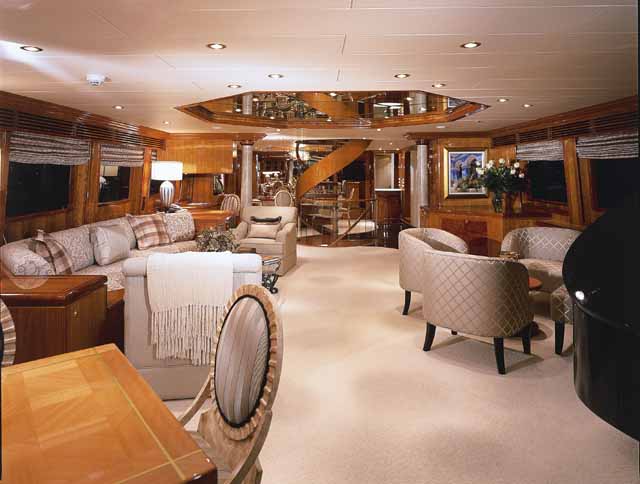
Luxury and Modern Yacht Interior Design
Teak soles in the head and the separate shower area add a classy touch, as does the polished glass countertop, complete with a household-size under-mount stainless steel modern sink. Above the sink there’s a mirrored panel that serves as a door to the medicine cabinet, and when the panel is slid to the side, it also covers a porthole, offering privacy to anyone using the facilities in luxury yacht.
E'llipse Traveler Watch
Minimal & Sleek ? find out. Ood-les of technology? find out, Large screen? find out, find out and find out The “E’llipse Traveler Watch” is the watch to finish all wristwatches. y? Becoz it has a elegant processor & the latest mathematical in human machine learning. Yes it will make you to learns! E’llipse Traveler watch knows what you actually want & keeps you updated. Thats not all. Bluetooth & ZigBee modules enable indoor navigation, which is an impossible element for the GPS. UI is based in it - 1 for every kind; weather, time, calendar & a customized API lets developers get invented.
What Is Registry?
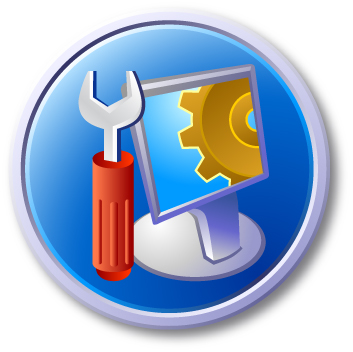
What is the Registry?
The Registry is a database used to store settings and options for the 32 bit versions of Microsoft Windows including Windows 95, 98, ME and NT/2000/XP. It contains information and settings for all the hardware, software, users, and preferences of the PC. Whenever a user makes changes to a Control Panel settings, or File Associations, System Policies, or installed software, the changes are reflected and stored in the Registry.
The physical files that make up the registry are stored differently depending on your version of Windows; under Windows 95 & 98 it is contained in two hidden files in your Windows directory, called USER.DAT and SYSTEM.DAT, for Windows Me there is an additional CLASSES.DAT file, while under Windows NT/2000 the files are contained seperately in the %SystemRoot%\System32\Config directory. You can not edit these files directly, you must use a tool commonly known as a "Registry Editor" to make any changes (using registry editors will be discussed later in the article).
The Structure of The Registry
The Registry has a hierarchal structure, although it looks complicated the structure is similar to the directory structure on your hard disk, with Regedit being similar to Windows Explorer.
Each main branch (denoted by a folder icon in the Registry Editor, see left) is called a Hive, and Hives contains Keys. Each key can contain other keys (sometimes referred to as sub-keys), as well as Values. The values contain the actualinformation stored in the Registry. There are three types of values; String, Binary, and DWORD - the use of these depends upon the context.
There are six main branches, each containing a specific portion of the information stored in the Registry. They are as follows:
* HKEY_CLASSES_ROOT - This branch contains all of your file association mappings to support the drag-and-drop feature, OLE information, Windows shortcuts, and core aspects of the Windows user interface.
* HKEY_CURRENT_USER - This branch links to the section of HKEY_USERS appropriate for the user currently logged onto the PC and containsinformation such as logon names, desktop settings, and Start menu settings.
* HKEY_LOCAL_MACHINE - This branch contains computer specific information about the type of hardware, software, and other preferences on a given PC, this information is used for all users who log onto this computer.
* HKEY_USERS - This branch contains individual preferences for each user of the computer, each user is represented by a SID sub-key located under the main branch.
* HKEY_CURRENT_CONFIG - This branch links to the section of HKEY_LOCAL_MACHINE appropriate for the current hardware configuration.
* HKEY_DYN_DATA - This branch points to the part of HKEY_LOCAL_MACHINE, for use with the Plug-&-Play features of Windows, this section is dymanic and will change as devices are added and removed from the system.
Each registry value is stored as one of five main data types:
* REG_BINARY - This type stores the value as raw binary data. Most hardware component information is stored as binary data, and can be displayed in an editor in hexadecimal format.
* REG_DWORD - This type represents the data by a four byte number and is commonly used for boolean values, such as "0" is disabled and "1" is enabled. Additionally many parameters for device driver and services are this type, and can be displayed in REGEDT32 in binary, hexadecimal and decimal format, or in REGEDIT in hexadecimal and decimal format.
* REG_EXPAND_SZ - This type is an expandable data string that is string containing a variable to be replaced when called by an application. For example, for the following value, the string "%SystemRoot%" will replaced by the actual location of the directory containing the Windows NT system files. (This type is only available using an advancedregistry editor such as REGEDT32)
* REG_MULTI_SZ - This type is a multiple string used to represent values that contain lists or multiple values, each entry is separated by a NULL character. (This type is only available using an advancedregistry editor such as REGEDT32)
* REG_SZ - This type is a standard string, used to represent human readable text values.
Other data types not available through the standard registry editors include:
* REG_DWORD_LITTLE_ENDIAN - A 32-bit number in little-endian format.
* REG_DWORD_BIG_ENDIAN - A 32-bit number in big-endian format.
* REG_LINK - A Unicode symbolic link. Used internally; applications should not use this type.
* REG_NONE - No defined value type.
* REG_QWORD - A 64-bit number.
* REG_QWORD_LITTLE_ENDIAN - A 64-bit number in little-endian format.
* REG_RESOURCE_LIST - A device-driver resource list.
Editing The Registry
The Registry Editor (REGEDIT.EXE) is included with most version of Windows (although you won't find it on the Start Menu) it enables you to view, search and edit the data withinthe Registry. There are several methods for starting the Registry Editor, the simplest is to click on the Start button, then select Run, and in the Open box type "regedit", and if the Registry Editor is installed it should now open and look like the image below.
An alternative Registry Editor (REGEDT32.EXE) is available for use with Windows NT/2000, it includes some additional features not found in the standard version, including; the ability to view and modify security permissions, and being able to create and modify the extended string values REG_EXPAND_SZ & REG_MULTI_SZ.
Create a Shortcut to Regedit
This can be done by simply right-clicking on a blank area of your desktop, selecting New, then Shortcut, then in the Command line box enter "regedit.exe" and click Next, enter a friendly name (e.g. 'Registry Editor') then click Finish and now you can double click on the new icon to launch the Registry Editor.
Using Regedit to modify your Registry
Once you have started the Regedit you will notice that on the left side there is a tree with folders, and on the right the contents (values) of the currently selected folder.
Like Windows explorer, to expand a certain branch (see the structure of the registry section), click on the plus sign
- to the left of any folder, or just double-click on the folder. To display the contents of a key (folder), just click the desired key, and look at the values listed on the right side. You can add a new key or value by selecting New from the Edit menu, or by right-clicking your mouse. And you can rename any value and almost any key with the same method used to rename files; right-click on an object and click rename, or click on it twice (slowly), or just press F2 on the keyboard. Lastly, you can delete a key or value by clicking on it, and pressing Delete on the keyboard, or by right-clicking on it, and choosing Delete.
Note: it is always a good idea to backup your registry before making any changes to it. It can be intimidating to a new user, and there is always the possibility of changing or deleting a critical setting causing you to have to reinstall the whole operating system. It's much better to be safe than sorry!
Importing and Exporting Registry Settings
A great feature of the Registry Editor is it's ability to import and export registry settings to a text file, this text file, identified by the .REG extension, can then be saved or shared with other people to easily modify local registrysettings. You can see the layout of these text files by simply exporting a key to a file and opening it in Notepad, to do this using the Registry Editor select a key, then from the "Registry" menu choose "Export Registry File...", choose a filename and save. If you open this file in notepad you will see a file similar to the example below:
Quote:
REGEDIT4
[HKEY_LOCAL_MACHINE\SYSTEM\Setup]
"SetupType"=dword:00000000
"CmdLine"="setup -newsetup"
"SystemPrefix"=hex:c5,0b,00,00,00,40,36,02
The layout is quite simple, REGEDIT4 indicated the file type and version, [HKEY_LOCAL_MACHINE\SYSTEM\Setup] indicated the key the values are from, "SetupType"=dword:00000000 are the values themselves the portion after the "=" will vary depending on the type of value they are; DWORD, String or Binary.
So by simply editing this file to make the changes you want, it can then be easily distributed and all that need to be done is to double-click, or choose "Import" from the Registry menu, for the settings to be added to the system Registry.
Deleting keys or values using a REG file
It is also possible to delete keys and values using REG files. To delete a key start by using the same format as the the REG file above, but place a "-" symbol in front of the key name you want to delete. For example to delete the [HKEY_LOCAL_MACHINE\SYSTEM\Setup] key the reg file would look like this:
Quote:
REGEDIT4
[-HKEY_LOCAL_MACHINE\SYSTEM\Setup]
The format used to delete individual values is similar, but instead of a minus sign in front of the whole key, place it after the equal sign of the value. For example, to delete the value "SetupType" the file would look like:
Quote:
REGEDIT4
[HKEY_LOCAL_MACHINE\SYSTEM\Setup]
"SetupType"=-
Use this feature with care, as deleting the wrong key or value could cause major problems within the registry, so remember to always make a backup first.
Regedit Command Line Options
Regedit has a number of command line options to help automate it's use in either batch files or from the command prompt. Listed below are some of the options, please note the some of the functions are operating system specific.
* regedit.exe [options] [filename] [regpath]
* [filename] Import .reg file into the registry
* /s [filename] Silent import, i.e. hide confirmation box when importing files
* /e [filename] [regpath] Export the registry to [filename] starting at [regpath]
e.g. regedit /e file.reg HKEY_USERS\.DEFAULT
* /L:system Specify the location of the system.dat to use
* /R:user Specify the location of the user.dat to use
* /C [filename] Compress (Windows 98)
* /D [regpath] Delete the specified key (Windows 98)
Maintaining the Registry
How can you backup and restore the Registry?
Windows 95
Microsoft included a utility on the Windows 95 CD-ROM that lets you create backups of the Registry on your computer. The Microsoft Configuration Backup program, CFGBACK.EXE, can be found in the \Other\Misc\Cfgback directory on the Windows 95 CD-ROM. This utility lets you create up to nine different backup copies of the Registry, which it stores, with the extension RBK, in your \Windows directory. If your system is set up for multiple users, CFGBACK.EXE won't back up the USER.DAT file.
After you have backed up your Registry, you can copy the RBK file onto a floppy disk for safekeeping. However, to restore from a backup, the RBK file must reside in the \Windows directory. Windows 95 stores the backups in compressed form, which you can then restore only by using the CFGBACK.EXE utility.
Windows 98
Microsoft Windows 98 automatically creates a backup copy of the registry every time Windows starts, in addition to this you can manually create a backup using the Registry Checker utility by running SCANREGW.EXE from Start | Run menu.
What to do if you get a Corrupted Registry
Windows 95, 98 and NT all have a simple registry backup mechanism that is quite reliable, although you should never simply rely on it, remember to always make a backup first!
Windows 95
In the Windows directory there are several hidden files, four of these will be SYSTEM.DAT & USER.DAT, your current registry, and SYSTEM.DA0 & USER.DA0, a backup of your registry. Windows 9x has a nice reature in that every time it appears to start successfully it will copy the registry over these backup files, so just in case something goes wrong can can restore it to a known good state. To restore the registry follow these instruction:
[list=1]
* Click the Start button, and then click Shut Down.
* Click Restart The Computer In MS-DOS Mode, then click Yes.
* Change to your Windows directory. For example, if your Windows directory is c:\windows, you would type the following:
cd c:\windows
* Type the following commands, pressing ENTER after each one. (Note that SYSTEM.DA0 and USER.DA0 contain the number zero.)
attrib -h -r -s system.dat
attrib -h -r -s system.da0
copy system.da0 system.dat
attrib -h -r -s user.dat
attrib -h -r -s user.da0
copy user.da0 user.dat
* Restart your computer.
Following this procedure will restore your registry to its state when you last successfully started your computer.
If all else fails, there is a file on your hard disk named SYSTEM.1ST that was created when Windows 95 was first successfully installed. If necessary you could also change the file attributes of this file from read-only and hidden to archive to copy the file to C:\WINDOWS\SYSTEM.DAT.
Windows NT
On Windows NT you can use either the "Last Known Good" option or RDISK to restore to registry to a stable working configuration.
How can I clean out old data from the Registry?
Although it's possible to manually go through the Registry and delete unwanted entries, Microsoft provides a tool to automate the process, the program is called RegClean. RegClean analyzes Windows Registry keys stored in a common location in the Windows Registry. It finds keys that contain erroneous values, it removes them from the Windows Registry after having recording those entries in the Undo.Reg file.

Windows Tips and tricks

Using your windows key
Most of you must have this windows key on your computer
 . On a windows computer this is a very important shortcut key. In combination with other keys this key forms a very important shortcut which can be used to performe some important tasks shown below:
. On a windows computer this is a very important shortcut key. In combination with other keys this key forms a very important shortcut which can be used to performe some important tasks shown below:| Windows key combination | Command / Acction |
 + E + E | Open windows explorer |
 + R + R | Opens Run Dialog box |
 + L + L | Locks your computer/workstation |
 + D + D | Shows Desktop (it works like minimize all. If you press  + D again it will restore back all the windows) this is quiet a useful key. + D again it will restore back all the windows) this is quiet a useful key. |
 + M + M | Select application starting with M on your desktop. (Generally My Computer) |
 + U + U | Shows windows utility manager. (Not so useful command) |
 + F + F | Opens Find window |
 + H + H | Opens drawing pad |
 + V + V | Speech recognition software |
 + Tab + Tab | Cycle throught Applications on your taskbar |
 +Shift+ Tab +Shift+ Tab | Reverse Cycle throught Applications on your taskbar |
 + break + break | Show system property dialog box |
Thanks Nilashis for liking my post. But i could really do with some more replies. It motivates me to write more... newayz.. here is more coming..
Most of the times when we are typing some stuff we hate to have to use mouse. it is really good if we had some keyboard shortcuts to do the work we want .. well, in fact we do have many shortcuts. I will start with how we can start may applications just by bringing up the run dialog box. Below i have listed some applications and their commands...
Pressing “
 + R†will bring the run window. Type in the following commands and hit enter to bring the respective application.
+ R†will bring the run window. Type in the following commands and hit enter to bring the respective application.The commands mentioned here are generic commands and should work for windows 98 and above although I have only tested them on Windows XP.
| Command to type | Application that will open |
| notepad | Notepad |
| winword | Microsoft word document |
| excel | Microsoft excel document |
| msaccess | Microsoft Access |
| powerpnt | Microsoft Power Point |
| mspaint | Paint |
| iexplore | Internet Explorer |
| firefox | Fire Fox |
| calc | Calculator |
| outlook | Microsoft Outlook |
| control | Control panel |
| desktop | Opens your desktop as a folder |
| explorer | Opens windows explorer |
| cmd | Command prompt |
[/glow]
Commands mentioned below are some advanced commands which open up utilities to configure windows.
| Command to type | Application that will open |
| services.msc | Microsoft Service Console |
| msconfig | System configuration utility |
| regedit | Registry Editor |
| certmgr.msc | Certificate Manager |
| mmc | Microsoft Management console |
[/glow]
The applications mentioned below opens for office 2003.
| Command to type | Application that will open |
| infopath | Microsoft Office Infopath 2003 |
| mspub | Microsoft Publisher 2003 |
| ois         | Microsoft Office Picture Manager |
Now some interesting stuff......
| Command to type | Application that will open |
| . (Single Dot) | Your user folder. |
| .. (Two Dots) | A level higher than your user folder (generally Document and setting folder) |
| …(Three Dots ) | Two level higher than your user folder (generally My computer) |
Some tips to make your computer faster
1)
Probably most of us are using windows XP as operating system on our computers. XP is know for its better graphics display over its predecessors. But this graphics display comes at a cost of CPU performance. So if you are not so awed by the looks of XP or want a change it for whatsoever reason here is what you can do:
 i) On "My Computer" icon right click and go to "Properties".
ii)Â In the "Sysetm Properties" dialog click on Advance tab.
iii) In the "Advance" tab, inside the performance section there is a "Settings" button. Click it.
iv) In the "Visual Effects" tab, there are various radio buttons. Click on "Adjust for best performance" radio button.
v) Click on "Apply".
Doing this will give your desktop a more traditional look and feel but you will observe some increase in your PC's performance. Personally i love this look and feel more than the XP default look and feel.
2)
Most of us have multiple partition hard disk. When partitioning a hard disk do we ever think the amount we assign to each partition? Well I am not about to go into the details of partitioning but whenever you partition a hard disk remember to give at least 20 GB of space to your system drive (Drive where your OS is installed, typically C:). Keep as much free space on your system drive as possible.
Windows uses a process called as "paging" to allocate runtime memory (also called as virtual memory) to programs. This happens because our RAMs are not always sufficient to handle all theapplication process. Due to this a filled called "pagefile.sys" is created on your system drive. So keep as much space on your system drive as possible. Also regularly defragment your system drive. this will improve the access to the sytsem files by the OS improving the performance of your computer.
3)
Improving your startup.
Whenever you start your windows, many programs are scheduled to start with it automatically. There are many ways to do this, E.g. put the program shortcut manually in Start --> Programs --> Start up or put the program entry in Autoexe.bat file or create a registry entry in the startup section. Well, even though these can be scheduled to start differently, there is a single way to view them: "msconfig" the configuration utility.
Click on Start --> Run.
In the Run dialog type "msconfig" and hit enter.
System Configuration utility dialog box comes up.
The last tab in this dialog box is a startup tab will all the programs schedule to startup start when windows start. Most of these utilities are not requied in our day to day work. Some of them are even viruses or worms or trogans. So remove the programs that you think are not required during startup. To do this uncheck the box against the startup item and click apply.
Now probably the question in your mind is how to decide which items to uncheck and which items to keep untouched??? We have an excellent guide for this. http://www.sysinfo.org/startuplist.php . Here you will find most of the startup program and what to do with them.
Unwanted startup programs not only slows your startup but also runs as a background process clogging your valuable CPU resource time.
Using your windows key
Most of you must have this windows key on your computer
 . On a windows computer this is a very important shortcut key. In combination with other keys this key forms a very important shortcut which can be used to performe some important tasks shown below:
. On a windows computer this is a very important shortcut key. In combination with other keys this key forms a very important shortcut which can be used to performe some important tasks shown below:| Windows key combination | Command / Acction |
 + E + E | Open windows explorer |
 + R + R | Opens Run Dialog box |
 + L + L | Locks your computer/workstation |
 + D + D | Shows Desktop (it works like minimize all. If you press  + D again it will restore back all the windows) this is quiet a useful key. + D again it will restore back all the windows) this is quiet a useful key. |
 + M + M | Select application starting with M on your desktop. (Generally My Computer) |
 + U + U | Shows windows utility manager. (Not so useful command) |
 + F + F | Opens Find window |
 + H + H | Opens drawing pad |
 + V + V | Speech recognition software |
 + Tab + Tab | Cycle throught Applications on your taskbar |
 +Shift+ Tab +Shift+ Tab | Reverse Cycle throught Applications on your taskbar |
 + break + break | Show system property dialog box |
Subscribe to:
Posts (Atom)
Followers
Labels
3G
(1)
Aircraft♥
(10)
Asteroids
(3)
Astronomy
(4)
AUDI
(2)
BLACK HOLEs
(3)
BLACKBERRY
(31)
BLUEJACKING
(1)
Bluetooth
(6)
BMW
(3)
BOAT
(14)
CARs
(34)
Cellphones and PDAs
(18)
CHINESE MOBILES
(3)
Comets
(1)
COMPUTER
(13)
COMPUTERS
(2)
Cool Gadget
(3)
COSMOS
(2)
Data Recovery
(3)
DESKTOP
(7)
DIGITAL CAMERA
(16)
DOPOD
(11)
EDUCATION
(1)
Engineering♥
(9)
ERICSSON
(1)
EXPENSIVE
(7)
FACTS
(1)
FACTS PROBLEM
(4)
FDISK
(1)
FILES
(1)
Flash Drives
(2)
FOLDERS
(2)
FUTURE
(12)
Galaxies
(4)
GOOGLE♥
(5)
GPRS
(1)
GPS
(2)
HACKS♥
(1)
HARD DISK
(6)
HIDDEN APPS
(2)
HTC
(18)
HUBBLE
(4)
INTERNET
(27)
iPHONE
(3)
JUPITER♥
(1)
KEYBOARD
(4)
LAPTOP
(41)
LG
(10)
LIGHTING
(2)
MARS
(7)
Mercedes♥
(13)
Microprocessor
(1)
Microsoft
(7)
MILKY WAY♥
(1)
MOBILE♥
(5)
MOBILES SECRETS
(2)
MOTORBIKE
(3)
MOTOROLA
(9)
MOUSE♥
(9)
MS OFFICE
(4)
NASA♥
(2)
NETWORKING
(1)
NOKIA
(24)
NOTEBOOKs
(18)
NUM LOCK
(1)
ONLINE
(6)
Outlook 2007
(1)
PC SECURITY
(3)
PHONEs
(1)
PLANET X
(3)
RAPIDSHARE
(1)
RECORDS
(2)
REGISTRY
(1)
ROBOTS
(9)
Rolls Royce
(1)
SAMSUNG
(2)
SCIENCE
(2)
SCREENS
(1)
SEO
(2)
SIMLOCK
(1)
SOFTWARE♥
(1)
Solar System
(24)
Sony Ericsson
(3)
SPACE
(29)
SPACE STATION
(1)
STARs
(2)
SUN♥
(1)
T♥MOBILE
(1)
Technology
(34)
TELESCOPE
(1)
The History of Astronomy
(1)
TRANSPORT
(62)
UNIVERSE
(4)
USB
(2)
VIRTUAL MEMORY
(3)
VIRUS
(1)
VISTA
(2)
WAP
(1)
WATCHES
(16)
WINDOW XP
(12)
WINDOWs
(4)
Windows 7
(2)
WINDOWs MOBILE
(1)
WIRELESS
(1)
